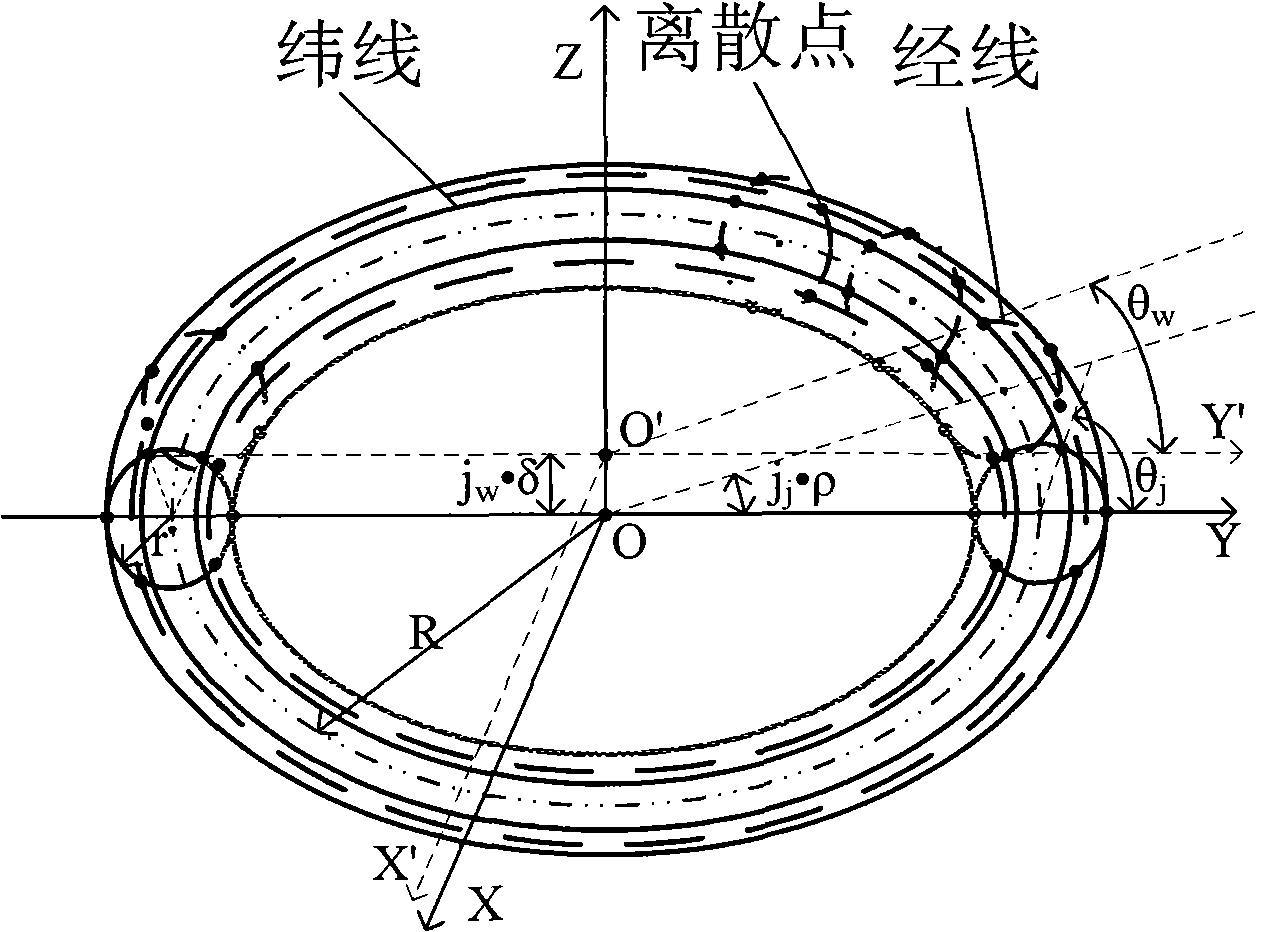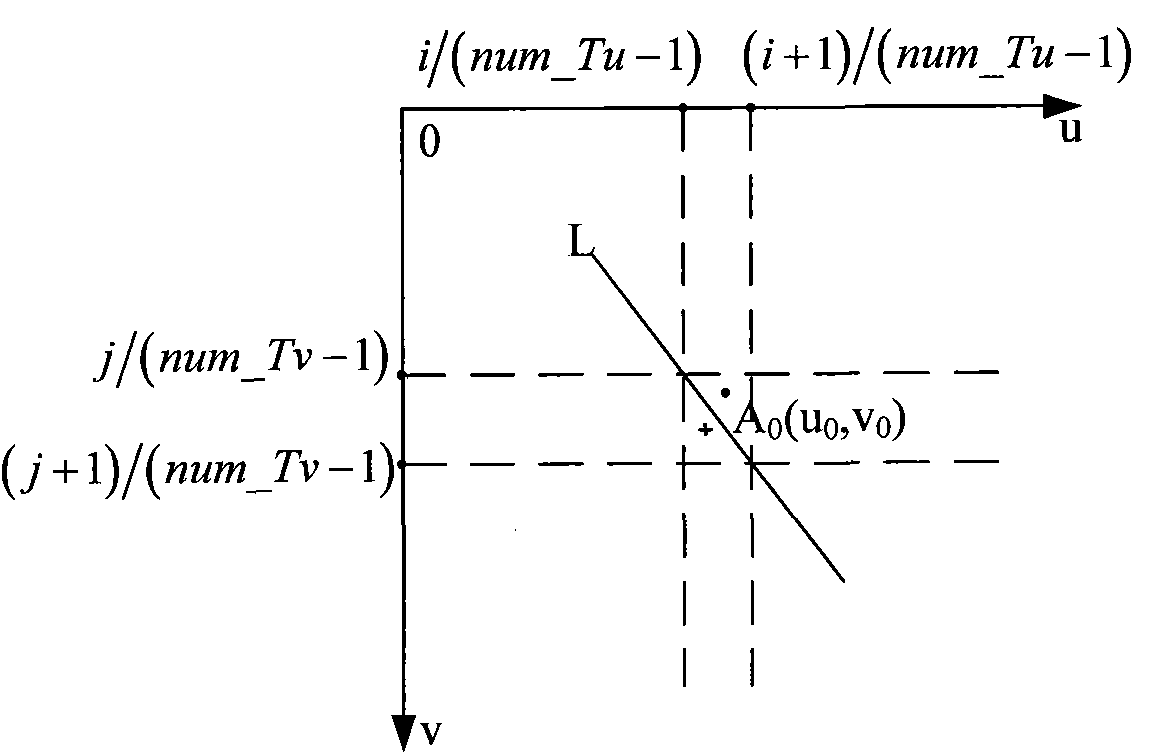Adjacent triangle method for calculating distance from point to curved surface
A technology of triangles and curved surfaces, applied in the field of surface CNC machining, can solve problems such as finding the shortest distance, achieve the effects of increasing calculation speed, reducing the amount of processed data, and reducing the number
- Summary
- Abstract
- Description
- Claims
- Application Information
AI Technical Summary
Problems solved by technology
Method used
Image
Examples
Embodiment Construction
[0036] The adjacent triangle method of point to curved surface distance calculation of the present invention, its preferred embodiment is, comprises the following steps:
[0037] Step A, surface discrete tolerance ε and surface curvature radius r u 、r v , calculate the maximum discrete step length of the triangular patch The processed surface is discretized in the u direction to form num_Tu points, and the v direction is discretized to form num_Tv points. The total number of discrete points is Point_all=num_Tu×num_Tv, and the total number of generated triangular patches is Tri_all=2×(num_Tu-1)×(num_Tv-1) , arrange the triangular faces in order and mark the serial number Tri_num, store the three vertices P of each triangular face 0 , P 1 , P 2 and its unit normal vector n 0 , n 1 , n 2 .
[0038] Step B. Take the tool center point T c is the origin of the coordinates, the vector T in the tool axis unit l Establish the tool coordinate system System_tool for the z co...
PUM
 Login to View More
Login to View More Abstract
Description
Claims
Application Information
 Login to View More
Login to View More - R&D
- Intellectual Property
- Life Sciences
- Materials
- Tech Scout
- Unparalleled Data Quality
- Higher Quality Content
- 60% Fewer Hallucinations
Browse by: Latest US Patents, China's latest patents, Technical Efficacy Thesaurus, Application Domain, Technology Topic, Popular Technical Reports.
© 2025 PatSnap. All rights reserved.Legal|Privacy policy|Modern Slavery Act Transparency Statement|Sitemap|About US| Contact US: help@patsnap.com



